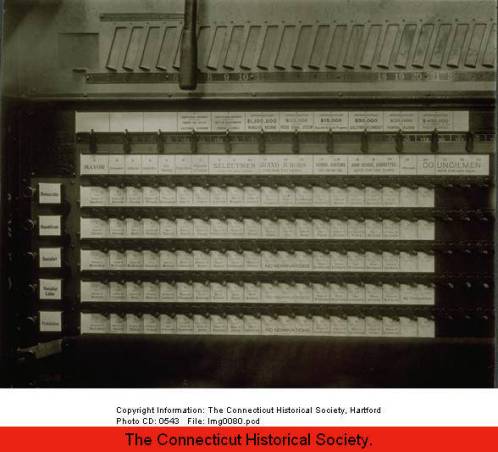Recognizing the inferiority and vulnerability of the op-scans the NYS Legislature in enacting ERMA included the requirement for an "audit", a post-election night recount of a percentage of supposedly randomly chosen paper ballots which the public was to believe was a check on the accuracy of the optical scanner counting. (Of course post-election night ballot recounts are illegal in New York, a fact that seems to be irrelevant to our officials.) But the so-called "auditing" procedures which have been developed by the state board of elections are themselves an indictment of the very proposition that software-based voting systems are an accurate and secure way to run an election.
The audit procedures are worth reading in full. But I have highlighted here what, if we could all still laugh about this, would be some of the more comical instances of doublespeak and oxymoron:
"Ballot Marks
o Valid votes that have been marked by the voter outside the vote targets or using a marking device that cannot be read by the vote tally system shall not be included in making the determination whether the voting system has met the standard of acceptable performance. "
What does this mean? Did the machine count the vote or not?
"Scanners will easily recognize votes that are marked with a density that is within the calibrated thresholds. In an audit, the human eye may perceive these marks differently that the scanner, however the audit team members and observers alike should understand that the scanners, in accordance with Section 7-201.1e provide each voter with a notification of any mark the system perceives as questionable and provides each voter with the opportunity to remark their ballot or cast it 'as-is'. "
In an audit the eye may perceive the mark differently? How did the voter who made the mark perceive it? Did the machine override voter intent? Silly voter.
"The problems in Cuyahoga County, Ohio in 2004, where audit supervisors rigged the ballot selection so that no discrepancies would be found, exemplify the danger of auditors hoping to find perfect matches and to avoid the difficult questions and additional work that might result if the records do not match."
i.e. Beware of fraud. Two Cuyahoga County election workers were convicted for the illegal manipulation of ballots during the 2004 recount.
"To counter the understandable temptation to make the paper and electronic records match..."
Understandable, especially if you are trying to cover-up machine rigging or because underfunded, understaffed elections boards will often cut corners . Who could have imagined....And what is the counter to that? More expensive, finicky, non-transparent, easily compromised machines?
Manual counts may sometimes reveal different voter intent than machine counts of ballots. Overvotes, marginal marks, hesitation marks, and other stray markings on manually marked ballots could cause optical scan voting machines to misinterpret voter intent that a human reviewer would be able to discern."
... and if we make enough exceptions to cover discrepancies between hand and machine counts, then almost any machine, even rigged ones, will pass "audit."

